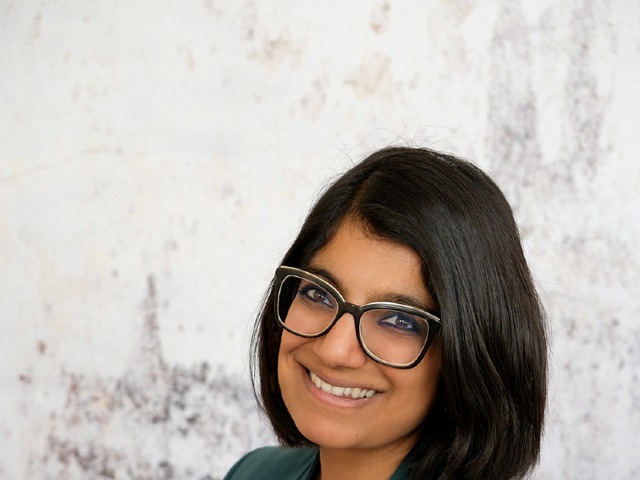Teaching innovation: Indira van der Zande on Challenge-Based Learning

Students working on real-world societal challenges that require an interdisciplinary and transdisciplinary approach – that’s what Challenge-Based Learning is all about. Indira van der Zande is Programme Director of the Bachelor’s degree programme in Global Responsibility & Leadership at the University College Fr yslân. She tells us more about teaching innovation.
How are you involved in teaching innovation at the UG?
I am the director of the Bachelor’s programme in Global Responsibility & Leadership at our University College Fryslân (UCF) in Leeuwarden. Here, we strive to be at the forefront of educational innovation with regard to active and blended learning, valuable assessment, and overall teaching quality. One of the more recent projects I’ve been working on together with staff and students is to completely revise the traditional course unit evaluations in order to co-design a new format that focuses on a reflection of learning rather than teaching.
You are also working on Challenge-Based Learning (CBL). Can you explain what this means?
CBL means that students work on real-world societal challenges that require an interdisciplinary and transdisciplinary approach. We create a space to develop new, research-based ideas that can be tested and maybe even implemented. At UCF, we refer to this as Living Labs. Unique to CBL is that the challenges are introduced by stakeholders and, ideally, that they involve a co-creation process between students, researchers, and public or private organizations. In CBL, the process of collaboration, creativity, and reflection is as important as the actual output and content. It is a different way of engaging with knowledge and requires the education sector, teachers, and learners to thoroughly adjust their ways of working.
What are your plans for the future in this field?
So far, we have mostly worked with challenges that were local, in Friesland or the wider Northern area. As the pandemic forced us to go online, we were able to start collaborations with international partners as well. For the future, I am keen to see what elements of online CBL can be kept in a blended learning experience. Another ambition is to strengthen the connection with vocational schools and universities of applied sciences, as they already have a lot of experience with real-world projects and, ideally, we could collaborate at all levels.
You are also participating in ENLIGHT’s Global Engagement Module. What does this involve?
I am currently coordinating the pilot edition of the Global Engagement Module, in which students and staff from nine different European universities come together to develop competencies for global citizenship. GEM is purposefully set-up as a blended module, so students learn to navigate interactions both in-person as well as in the online environment. In GEM, we also implement a form of CBL, as students work on a wicked problem. This year, the challenges concern climate change, migration & society, and public health. It is a very exciting opportunity to experience whether groups with maximal diversity are indeed able to come up with innovative solutions.
How do you think the coronavirus pandemic has affected teaching innovation?
The pandemic has definitely accelerated the use of (new) technologies, thereby innovating parts of learning that had not changed in a long time. Think of now common-practice collaborative learning activities in Perusall and Padlet, or inviting guest lecturers from across the globe to the classroom. Asynchronous teaching, whereby students can prepare in their own time(zone), proves to work especially well for the cognitive dimension of learning (knowledge transfer from teacher to student or student to student). At the same time, almost three years into the pandemic, we can also see that there is no replacement for the physical academic community when we talk about developing crucial competencies such as co-learning, interdisciplinarity, and social responsibility, or for the passion and enjoyment that you encounter in out-of-class academic engagements.
What will education look like in five years’ time?
I would expect that blended learning is here to stay and that we will increasingly make use of the opportunities that digital technologies offer, while at the same time acknowledging the need to learn in an inclusive and safe space, which requires smaller groups and fostering purposeful in-person interactions. I also hope that we will be able to continue our efforts in creating a pluralistic curriculum; recognizing that there are different epistemologies and including voices of minorities to broaden our understanding and empathy. And, finally, I expect that we will further strengthen the relationship with external stakeholders, in CBL-like projects.
How do you involve students in teaching innovation?
I try to involve them whenever possible! To illustrate, when we developed the Living Lab concept four years ago, the development team consisted of students and staff. The students actually invented the format of the final conference. So, I try to create this environment at UCF where lecturers and students are actively involved and feel encouraged to share ideas and pilot educational initiatives. I think, I hope, that the community knows and appreciates that suggestions are always taken seriously. Every time we talk about the course units, I am so impressed by the initiatives of our teaching team: we have course units involving artists; experiments with specification grading; student-led guest lectures; simulation games, and many other original formats. They really make teaching and learning what it should be: fun!

